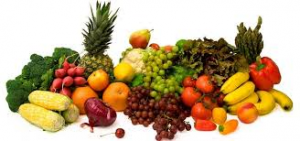Grass alternatives are greener and better
As our climate heats up every year, the matter of lawns invariably creeps into our consciousness.
As spring approaches, homeowners’ heads fill with questions and concerns about their grass. Is aerating worth the money? Can I keep pests away in a manner that is eco-friendly? How can I find the extra time to maintain my lawn and keep it looking like a lush green emerald carpet? My neighbour paved over his grass. Can I do the same?
Our view toward lawns is changing. Not the ultimate landscape material it once was, grass is less popular compared to its heyday as homeowners now look for ways to save time, money and the environment.
We’re not trying to dump on traditional lawns, but there are clearly some great alternatives available that look attractive and are more environmentally sound than traditional turf grass. Just think of the time and money you’ll have for other pursuits.
Here are some options worth considering:
Fake grass
It’s green, it’s even, it’s soft. What’s not to like? Artificial turf can easily be mistaken for the real deal. No cutting or weeding required, the turf can last up to 15 years. Your only maintenance is keeping it clean by hosing it down or vacuuming it. Artificial grass is expensive to install but you’re initial investment is rewarded in time and money saved from not having to water or fertilize the lawn or to cut it.
Hardscaping your lawn
This technique essentially describes the addition of elements to your lawn and garden that consist of paved areas, decks, wood chips, stones or fountains. These dry gardens are further enhanced by adding any combination of native ornamental grasses, plants and shrubs alongside hard elements such as stone chips, pea gravel and larger decorative rocks.
While folks either love or hate the look of a paved-over front lawn, there are plenty of environmental reasons for not turning your grass into a tarmac. And, according to the Toronto Star, the process of getting approvals for paving your front yard is not an easy one.
Garden of Edibles

Talk about eating the fruits of your labour. Installing a garden that yields fruits and vegetables has its own set of benefits, perhaps the foremost being the sense of satisfaction you get from growing your own food.
Native plants and ground covers
The beauty of these species is that they survive, and thrive even, with very little outside help. Ground covers come in a variety of shapes, colours and blooms. Consider Creeping Potentilla, a drought tolerant low-growing plant that produces yellow flowers, Scotch Moss, perfect for growing in the cracks between stones or Thyme, which attracts insects and can withstand moderate foot traffic.
If you prefer taller plants, try indigenous flowers and shrubs. Asters, Coneflower, Milkweed and violets make for a colourful garden that will attract bees and butterflies. For bushes and shrubs and to fill bigger spaces, try Chokeberry, Dogwood, Honeysuckle and Yew.
While the transition may take some getting used to, know that you are free to pursue more enjoyable pastimes than lawn maintenance. Know also that you are doing your part for the environment as half of all residential water usage in summer is due to lawn watering with much of that water lost to evaporation and run-off, according to Environment Canada.